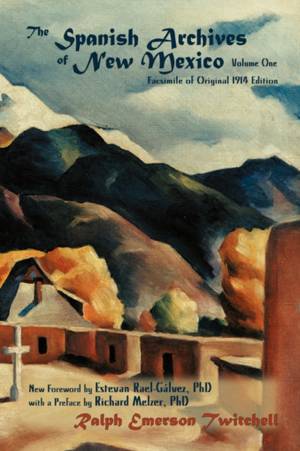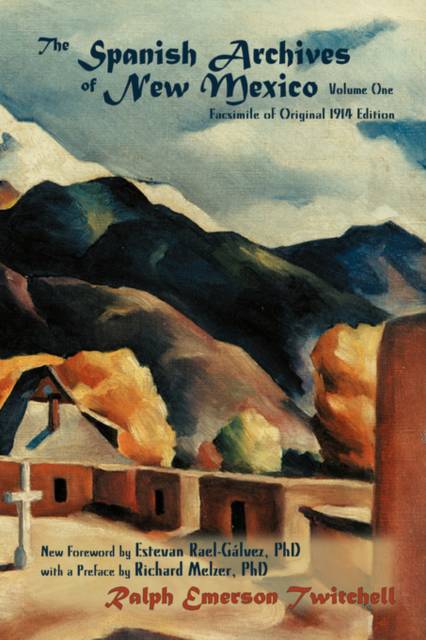
- Retrait gratuit dans votre magasin Club
- 7.000.000 titres dans notre catalogue
- Payer en toute sécurité
- Toujours un magasin près de chez vous
- Retrait gratuit dans votre magasin Club
- 7.000.0000 titres dans notre catalogue
- Payer en toute sécurité
- Toujours un magasin près de chez vous
The Spanish Archives of New Mexico, Volume One (Softcover)
Ralph Emerson Twitchell
62,45 €
+ 124 points
Description
In what follows can be found the doors to a house of words and stories. This house of words and stories is the "Archive of New Mexico" and the doors are each of the documents contained within it. Like any house, New Mexico's archive has a tale of its own origin and a complex history. Although its walls have changed many times, its doors and the encounters with those doors hold stories known and told and others not yet revealed. In the Archives, there are thousands of doors (4,481) that open to a time of kings and popes, of inquisition and revolution. "These archives," writes Ralph Emerson Twitchell, "are by far the most valuable and interesting of any in the Southwest." Many of these documents were given a number by Twitchell, small stickers that were appended to the first page of each document, an act of heresy to archivists and yet these stickers have now become part of the artifact. These are the doors that Ralph Emerson Twitchell opened at the dawn of the 20th century with a key that has served scholars, policy-makers, and activists for generations. In 1914 Twitchell published in two volumes "The Spanish Archives of New Mexico," the first calendar and guide to the documents from the Spanish colonial period. Volume One of the two volumes focuses on the collection known as the "Spanish Archives of New Mexico, Series I," or SANM I, an appellation granted because of Twitchell's original compilation and description of the 1,384 documents identified in the first volume of his series. The Spanish Archives of New Mexico was assembled by the Surveyor General of New Mexico (1854-1891) and the Court of Private Land Claims (1891-1904). The collection consists of civil land records of the Spanish period governments of New Mexico and materials created by the Surveyor General and Court of Private Land Claims during the process of adjudication. It includes the original Spanish colonial petitions for land grants, land conveyances, wills, mine registers, records books, journals, dockets, reports, minutes, letters, and a variety of other legal documents. Each of these documents tell a story, sometimes many stories. The bulk of the records accentuate the amazingly dynamic nature of land grant and settlement policies. While the documents reveal the broad sweep of community settlement and its reverse effect, hundreds of last wills and testaments are included in these records, that are scripted in the most eloquent and spiritual tone at the passing of individuals into death. These testaments also reveal a legacy of what colonists owned and bequeathed to the next generations. Most of the documents are about the geographic, political and cultural mapping of New Mexico, but many reflect the stories of that which is owned both in terms of commodities and human lives. Archives inevitably, and these archives more than most, help to shape current debates about dispossession, the colonial past, and the postcolonial future of New Mexico. For this reason, the task of understanding the role of archives, archival documents, and the kinds of stories that emanate from them has never been more urgent. Let this effort and the key provided by Twitchell in his two volumes open the doors wide for knowledge to be useful today and tomorrow. --From the Foreword by Estevan Rael-Gálvez, New Mexico State Historian
Spécifications
Parties prenantes
- Auteur(s) :
- Editeur:
Contenu
- Nombre de pages :
- 620
- Langue:
- Anglais
- Collection :
Caractéristiques
- EAN:
- 9780865346475
- Date de parution :
- 01-07-08
- Format:
- Livre broché
- Format numérique:
- Trade paperback (VS)
- Dimensions :
- 156 mm x 234 mm
- Poids :
- 857 g

Les avis
Nous publions uniquement les avis qui respectent les conditions requises. Consultez nos conditions pour les avis.






